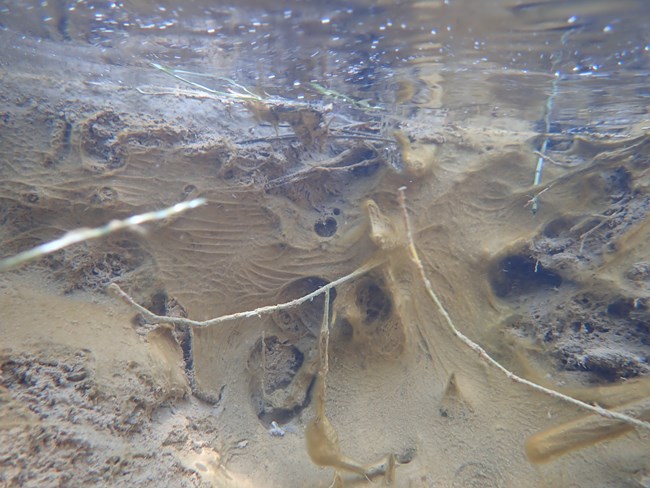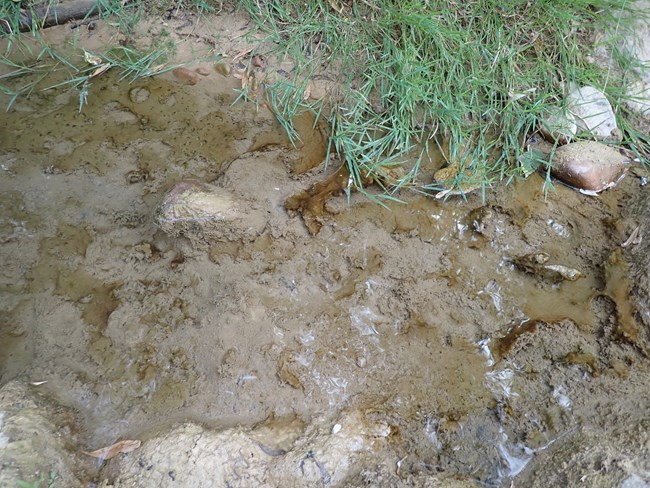Last updated: January 21, 2022
Article
Benthic Harmful Cyanobacteria Bloom in a Pristine Wild and Scenic River
Content submitted by: Robyn Henderek, Zion National Park

NPS
On July 4th, 2020 a dog died shortly after recreating in the North Fork of the Virgin River in Zion National Park. The dog had been seen playing with and eating some floating biomass in the river and had likely been exposed to a harmful toxin-producing cyanobacteria. After the dog death was reported to the park by the owner, park staff began investigating for the presence of a benthic Harmful Cyanobacteria Bloom (HCB) in the Virgin River Wild and Scenic River. Staff found both toxin-producing cyanobacteria of the genus Microcoleus as well as a high concentration of a potent neurotoxin, anatoxin-a, present. This discovery spurred the issuance of a recreational advisory on the North Fork of the Virgin River to alert recreators to risk of exposure to harmful cyanotoxins.
Unlike the commonly studied planktonic HCBs which tend to occur in brackish, high-nutrient lakes and ponds (think blue-green, pea soup HCBs), benthic HCBs can occur in low-nutrient, pristine wadable streams and rivers, such as Wild and Scenic Rivers. Since the discovery of benthic HCBs in the Virgin River system in Zion National Park, benthic harmful cyanobacteria have been found in other Wild and Scenic Rivers across the United States. Benthic HCBs pose a particular challenge to river managers as national standards for both monitoring and advisory issuance has yet to be developed.

NPS
Zion National Park staff have been monitoring monthly for the presence of both toxigenic cyanobacteria as well as toxins in the benthic mats and water column through Water Year 2021. Zion National Park has found that toxin producing cyanobacteria can be present and producing toxins at a concentration harmful to recreators and their pets in every season – winter, spring, summer, and fall. The genus of benthic HCBs found most commonly in the Virgin River system, Microcoleus, is typically found growing along the river edge and can be brown, black, yellow, or green in color and grows on river cobbles, aquatic vegetation, and sand and silt on the river bottom. Several researchers across the U.S. are actively studying the benthic HCB in Zion National Park to help the park understand under what conditions benthic HCBs proliferate, if there are any filtration systems capable of reducing toxins to a level safe for drinking water for backcountry recreators, and an in-depth study on the genomics of benthic HCBs.
